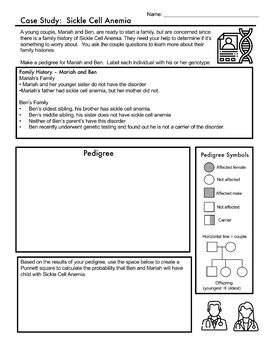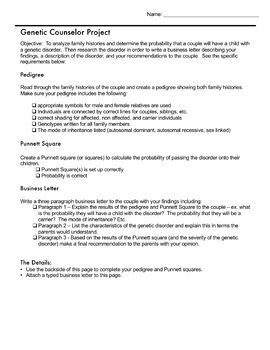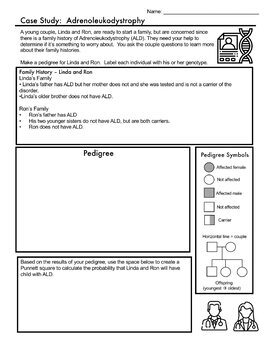Genetic Disorders: Counselor Simulation
- PDF
What educators are saying
Description
Students take on the role of a genetics counselor in this real world activity. Each student is assigned a different couple that has come to them to find out more about the probability of having a child with a specific genetic disorder and to find out more about the genetic disorder. During the activity, students read the family history of the couple and use this to create a pedigree. From this pedigree, the students identify the genotype of the couple and then calculate the probability of having a child with the disorder.
Then the students research the disorder to find out the characteristics of the disorder. Finally, the students write a three paragraph business letter to the couple to describe their probability of having a child with the disability and the characteristics of the disorder.
Includes 10 different family histories:
•3 Autosomal Dominant Disorders: Huntington’s, Marfan Syndrome, Achondroplasia
•4 Autosomal Recessive Disorders: Cystic Fibrosis, Tay Sachs, Albinism, Sickle Cell Anemia
•3 Sex Linked Disorders: Hemophilia A, Duchenne Muscular Dystrophy, Adrenoleukodystrophy
What’s included:
- Project Overview/Score Sheet with project requirements listed (with and without point totals)
- 10 family history pages with space to complete pedigrees and Punnett squares
- Answer key with sample Pedigrees given for each disorder





